The price of the stock is flat, buying options and losing money!
Author: The Little Dream, Created: 2016-12-08 17:09:35, Updated: 2016-12-08 17:12:20The price of the stock is flat, buying options and losing money!
First of all, the various classifications of options, the methods of classification are also different, you can classify options according to the type of rights, the relationship with the execution price, the time of the authorization, the delivery mark, etc. For beginners, such a classification can be a headache. In fact, it is not so complicated, in actual trading, you just have to remember two classifications: the first is just said, according to the type of rights, divide the option into up and down, look at the overvalued, look at the overvalued, buy the overvalued, look at the overvalued, buy the overvalued, buy the overvalued.
There is also another classification that you need to remember, based on the relationship between the execution price and the current price, you can divide the option into real, par value and zero value. What does this mean? That is, I am a plurality of options, if I have an immediate right to profit, this option is a real option, otherwise it is a null option, if the execution price is exactly equal to the current price, then we call this option a par option. This classification is important because it involves the calculation of option leverage, I hope you can remember, later we will talk about the issue of option leverage.
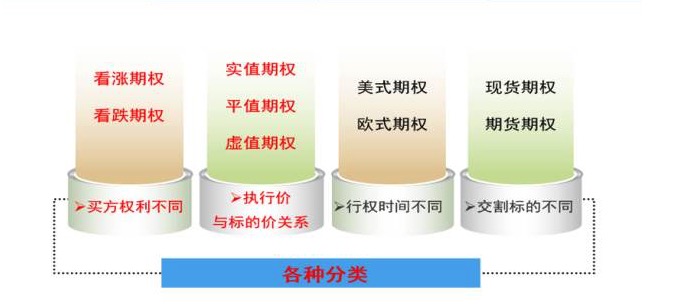
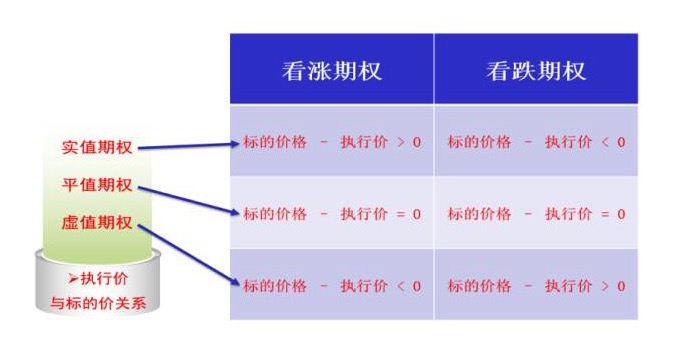
Just said, if the market is overlooked, you can buy a bear option, if the market is overlooked, you can buy a bear option. For example, now the index of 50 is up to 2150 and if you look at multiple markets, you can spend 50 buys of the index of 50 bear options, as shown in the chart, the maximum loss is locked in the right amount of 50 yuan.
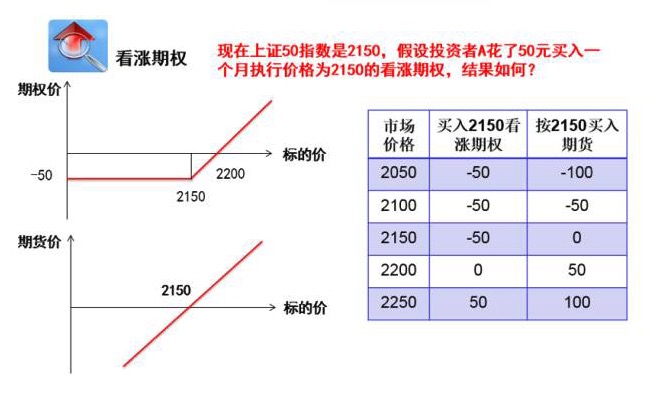
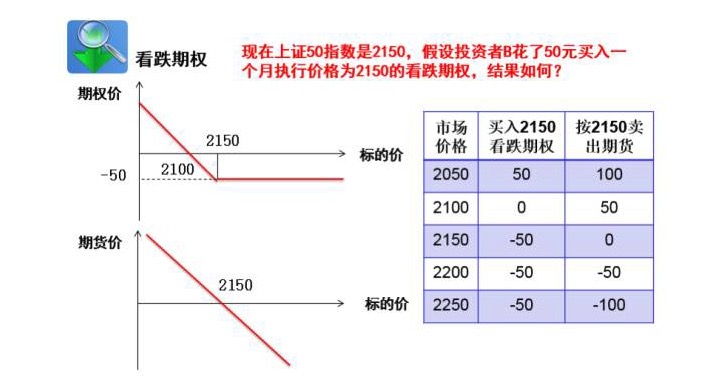
Of course, there is no free lunch in the world, you get the right, naturally you have to pay. Again, emphasize that the buyer of the option is not equal to the seller of the option, the rights and obligations are not equal.
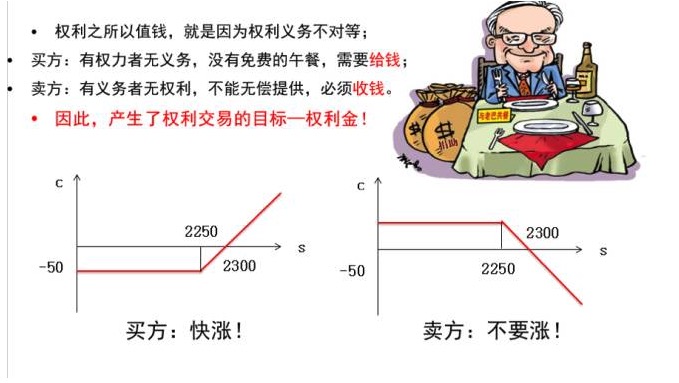
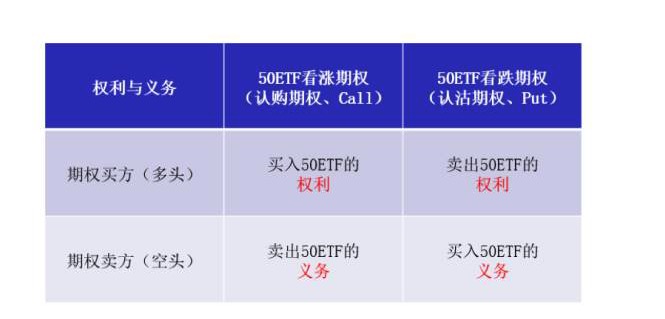
We often hear people say that options are non-linear financial products, so why not say non-linear? The following is an example of the relationship between the option price and the expiration date. Option price changes are not directly related to changes in the spot price, but are also influenced by volatility, expiration time, interest rates, etc. This is beyond the scope of today's lecture.
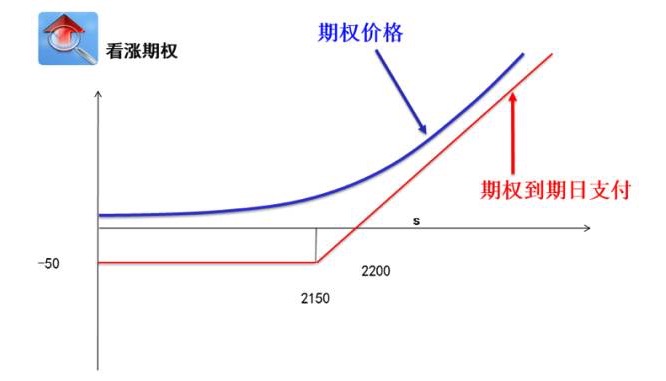
Due to the non-linearity of the relationship, the leverage of options is also particularly large. For example, the same buy one million 50 ETF spot. The cost of buying an ETF is one million, buying an IH futures, in the current collateral calculation, it will probably take about 390,000, the leverage is about 2.6 times.
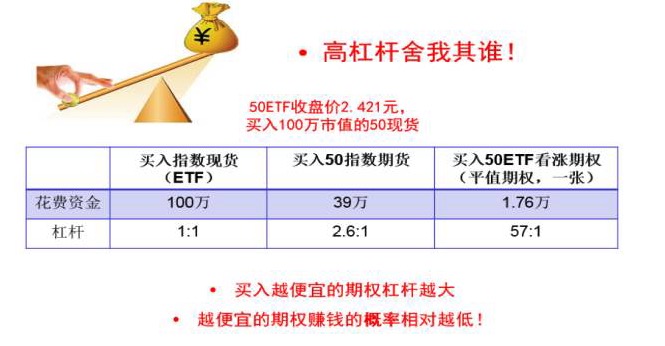
50 ETF options are introduced
The following is a list of 50 ETF options. This table is a list of 50 ETF options, of which I have extracted a portion, and you can find a detailed table on the Shanghai Stock Exchange website.
Here we make a comparison with the IH50 futures, the more important part of which I have highlighted in red letters. The contract multiplier is 10000 for an option, i.e. one option contract corresponds to 10,000 50 ETFs. The drop-off table, we all know that the drop-off table of the IH50 futures is ± 10% of the closing price yesterday, but the drop-off table of the options is calculated based on the price of the indices rather than the price of the contract itself.
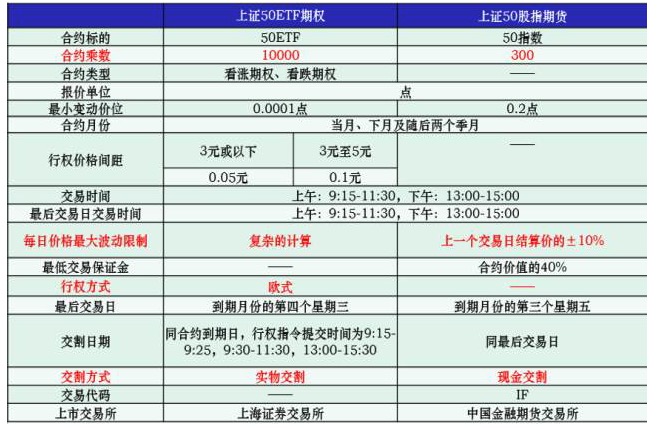
As I have just said, the range of the hedge-backed options contracts is wide. I have a chart here, which is the day-to-day trend of 2400 on October 24, 2016, 50 ETFs bought December 2400. You can see that at noon that day the largest increase in the contract ever went to around 101%, before closing the increase narrowed to 53%.
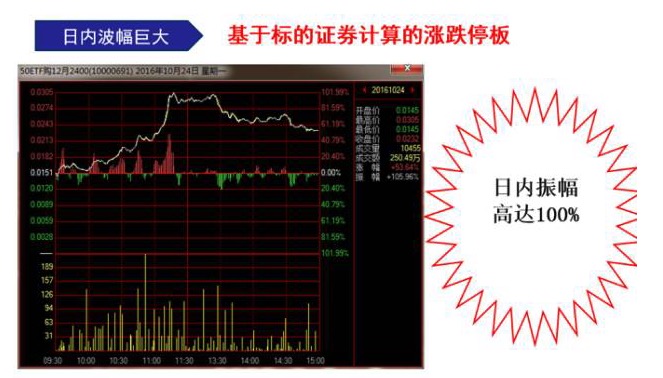
If you download the trading software, you can see the quotes of the options contract, usually the quotes are like this, how do you see it? First of all, the first thing we want to see is the securities and the expiration month of this stack of options contracts linked to the securities, here you can see the 50 ETF fund linked to it, expired in November. Then this is the option type, and the usual trading software is set to the left side is a bullish contract, the right side is a bearish deal.
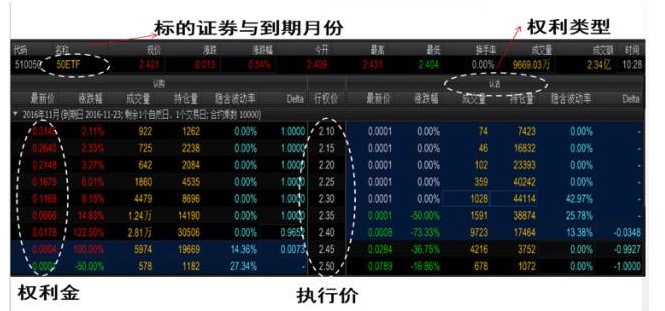
The next step is to teach you how to look at the code of the option: for example, this, 50ETF buy December 2.15 what is it? 510050C1510M02150 what is it? In fact, we can break this code, which is the elements of the option contract.
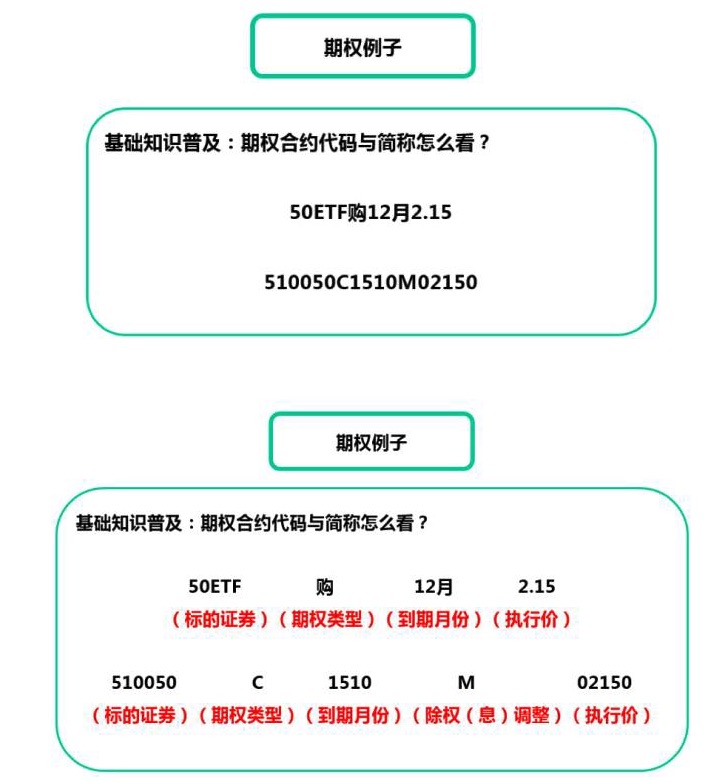
Basics of options trading
After a round of basic introductions, I'll tell you about some basic options trading strategies.
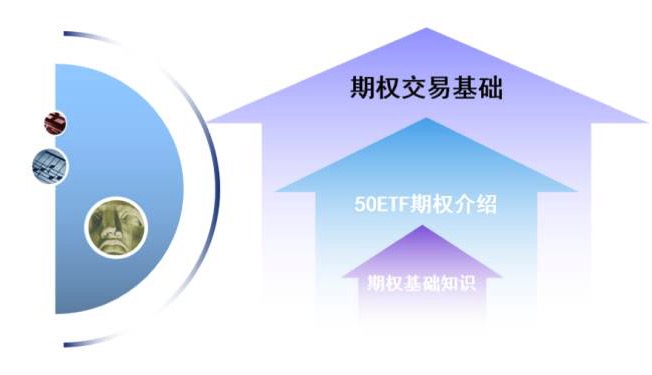
Simple options trading strategies can be roughly divided into: leveraged speculation, earnings enhancement, transcript unlocking, volatility trading. First, in the first part, let's look at leveraged speculation trading using options.
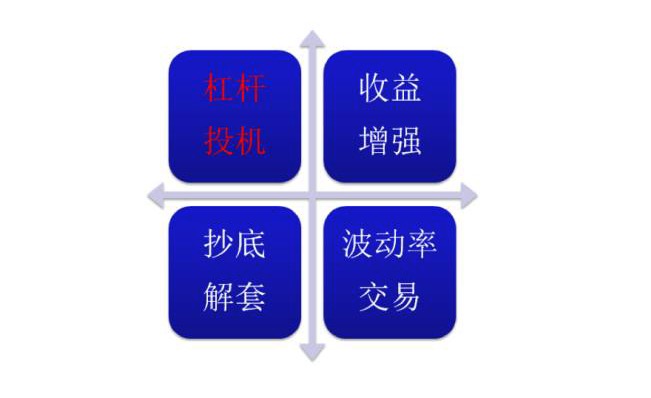
The following is a table of options contracts from the trading software, for example, if you feel that the market is bullish, you want to buy a bullish option, open the trading software, at a glance, my mom has a bunch of contracts, and you can see the eyes are spinning, which contract should I choose? Do you remember the classification of real-value options and worthless options?
So is it OK to trade the cheapest contract? No, the current volume of domestic 50 ETF options is mostly concentrated near the par value option, and the farther away from the par value contract, the smaller the transaction volume will be, so if you choose too much par value option trading, you will face the problem of insufficient liquidity. Insufficient liquidity is a big taboo.
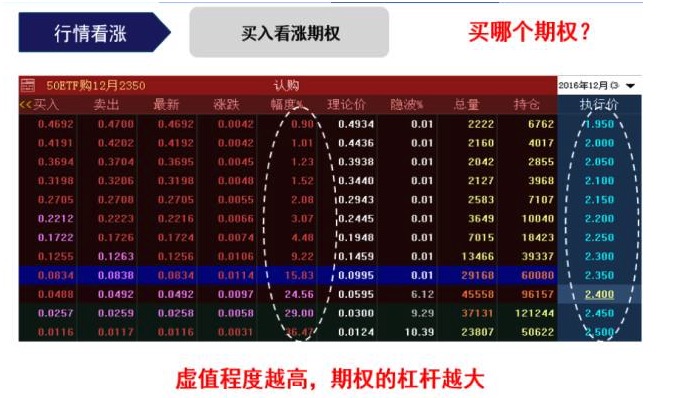
For example, the trend from 20161018 to 20161114 is similar to buying a 50 ETF spot with 50 ETFs expiring in December. The spot has risen 5.7% over this period, while the option has risen a staggering 129% over this period. You can see that the leverage of the option is quite impressive.
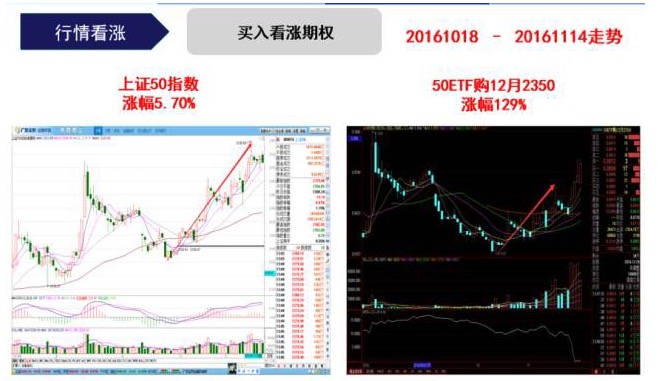
The second part is earnings enhancement, which may be a bit unfamiliar to some investors. What is earnings enhancement?
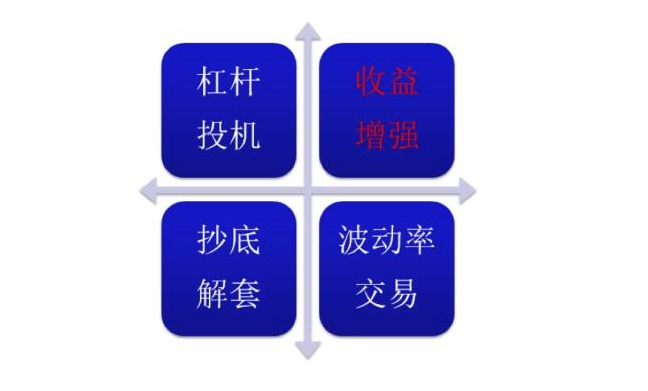
For example, we bought 10,000 shares of 50 ETFs on October 18, 2016 at a cost of $2.19, and we look at more than 50 indices over the long term, but because there is a falling gap above the index, it may put pressure on the index, so we hope to close at a profit of around $2.3 and then look for an opportunity to enter.
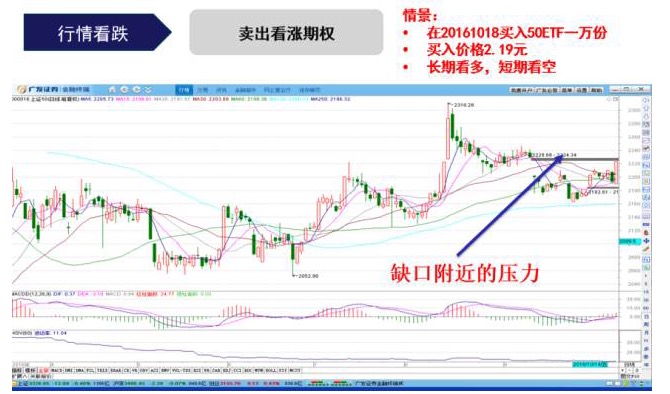
At this point, you have the option to do nothing until the ETF rises to $2.3 and sell your holdings. But, once you have an option, you have one more option: you can sell a put option at $2.3.
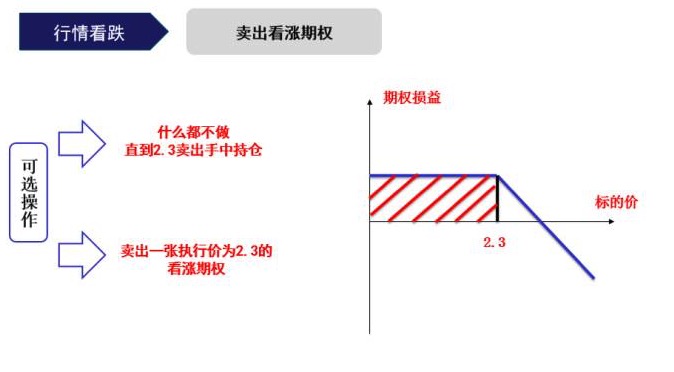
Assuming the option expires one month later, one month later there may be three situations: 1. the index runs up to 2300 points, and if nothing is done, it is of course profitable. 2. if the put option is sold, then, one month later due to the rise in the index, the option in hand is executed by the buyer, the 50 ETF in hand is held and sold to the buyer of the option, which is also profitable, and there is a right to profit.
As you can see, when you have a stock in hand, the option to sell gives you an additional option to operate, since the holding in hand, the option to sell a call option is no longer risk-free. At the same time, you can also harvest the rights money to compensate for some losses or even profits in case of market failure.
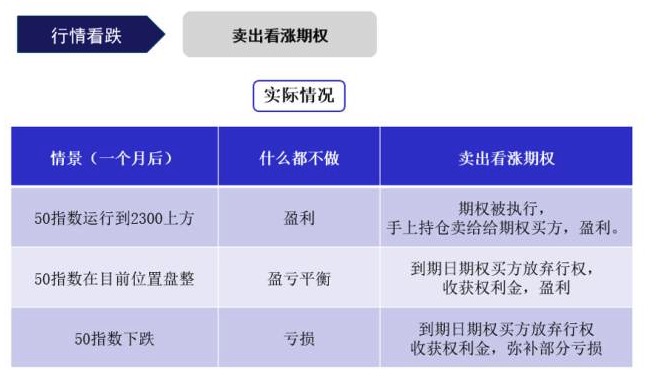
In addition to boosting earnings, options can also be so fun to use.
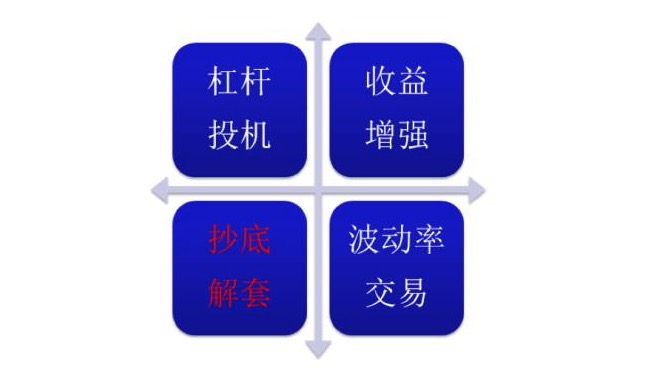
Let's switch to the following scenario: In January 2016, the index 50 continued to fall, and from the chart analysis, this round of declines shows signs of a reversal and a possible bottom. We expect the index to have a bigger rebound around 1.9 and therefore hope to make a transition around 1.9.
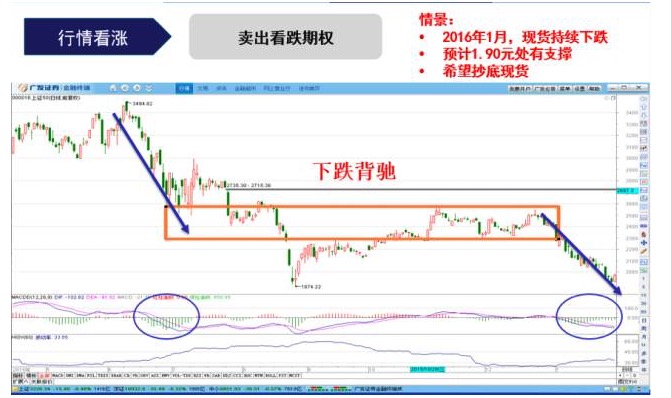
Similarly, we can choose not to do anything until we buy the stock at $1.9 and the other option is we can choose to sell a short-term bear option at $1.9. So what happens next?
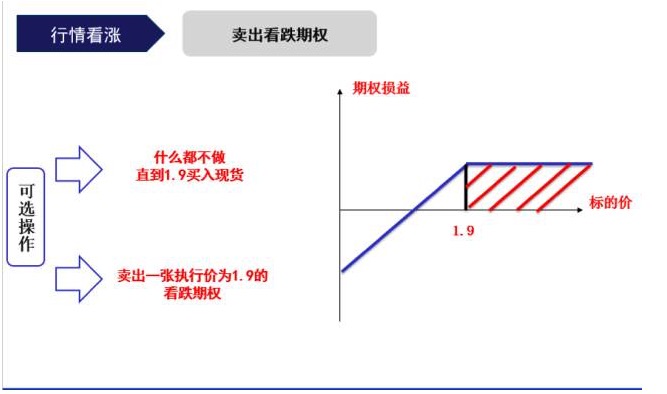
One month later, when the option expires, there are three scenarios: (1) the 50 index drops to below 1900, and if nothing is done, then by 1900 the stock is built, the cost is uncertain. If a bear option is sold, because the option drops to below the execution price, the option is executed, and the option buyer sells the spot to you at a price of 1.9.
Therefore, selling a put option in the absence of a position can have a counterfeit effect.
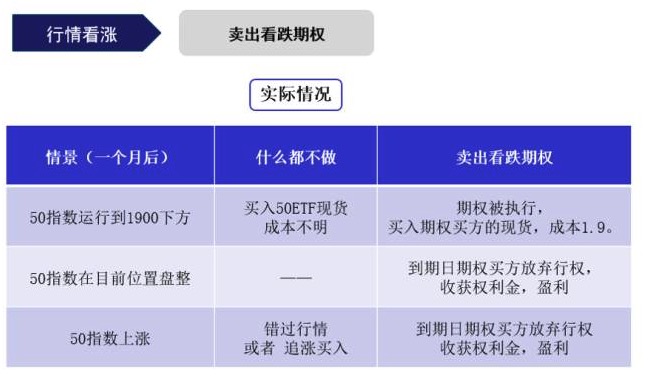
So, how does it work to unlock options? Let's go to the next scenario: if we unfortunately buy 50 ETFs at the top of 2015 and cost 2.5 and by August 50 ETFs continue to fall to 2.3? We are optimistic about the long-term 50 index and don't want to cut our holdings, but at the same time we know from our analysis that this round of declines is not over and should continue to fall, so how do we deal with the holdings?
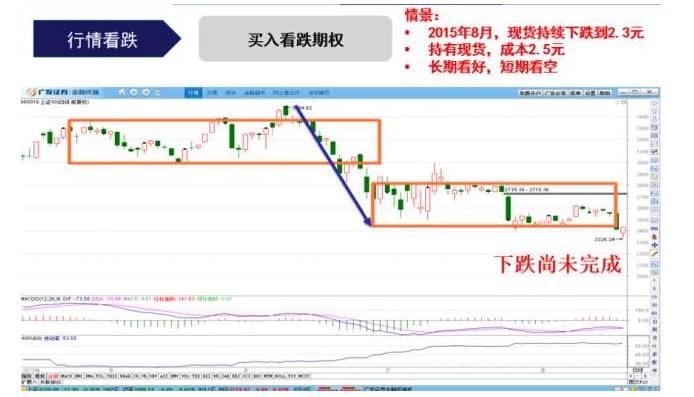
Of course, we can still choose not to do anything, or, we can buy a bearish option at the execution price of 2.3. After a month: 1. the index continues to fall, if nothing is done, the holding will be a continuous loss, if you buy a bearish option, at the expiration date you can walk, sell the holding at the price of 2.3, a small loss. 2.
Therefore, buying a put option while holding the spot can achieve the effect of unlocking.
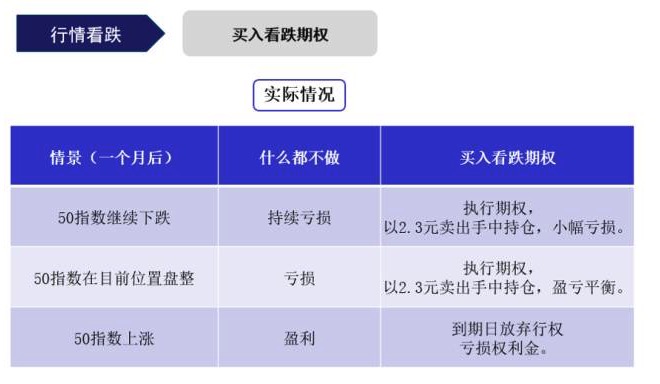
Finally, let's talk about today's advanced version of trading: volatility trading.
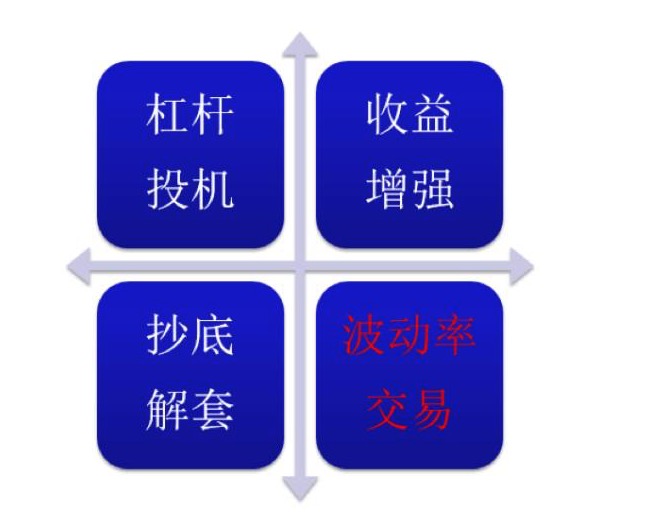
Let's go back to the overview of the 50 index that started today. As of the close of the last trading day, the historical volatility of the 50 index has returned to historical lows, which means that there will likely be a bull market bubble (please be sure to remember the double quotes on the market).
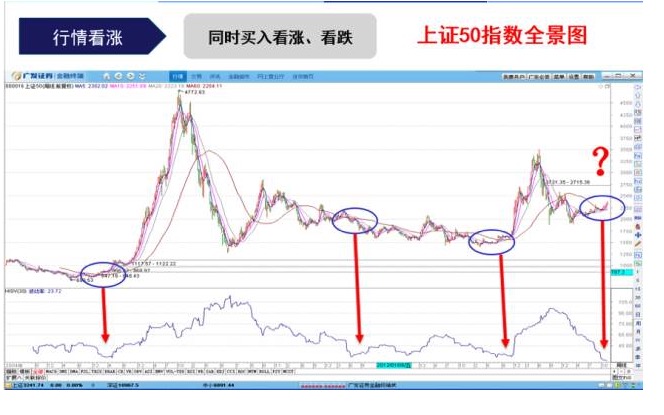
At this time we have two approaches: the first is to buy a one-sided movement of the spot price, there is a possibility of a bull and there is also a possibility of a big loss. The second method is: buy the same price of the option, the same number of bull and bear options at the same time, this combination we call a cross-composition, from the expiration profit and loss chart we can see that whether the index is behind the bull or the big fall, we can all make a profit.
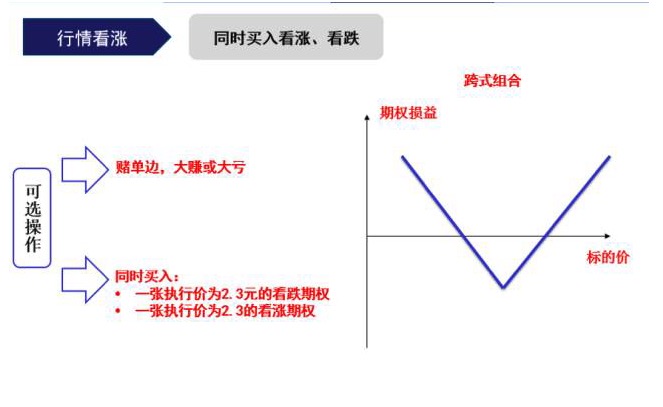
Today's training, which is about to end, has said so much, it's time to talk about the caveats of options trading.
The first caveat is: First, to sell options without a spot position, we call it a naked sale, and the naked sale is very dangerous for the option seller. Second, the above mentioned volatility trading, in fact, it is necessary to empty a part of the spot to achieve the effect of real trading volatility. Therefore, the beginner of options trading, I recommend not to try to be an option seller, but also not to consider doing volatility trading, first to do the simple option multiple heads, and then to try a high difficulty action after a certain basis.
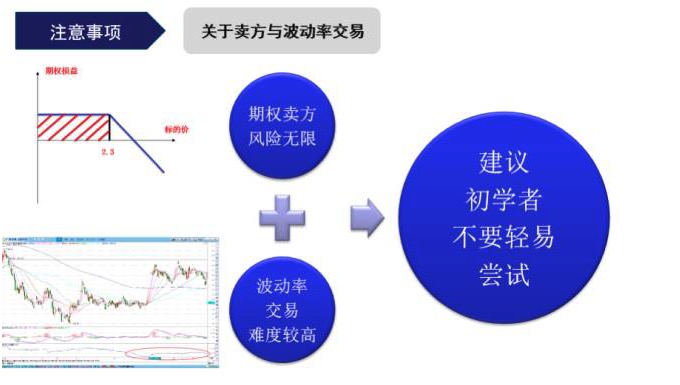
The second thing to note is that time is the biggest enemy of options buyers. Why say that? Here is an example: If we want to short on the index 50 ETF on September 7, 2016, and want to short. Then we have two options: sell short IH50 futures contracts or buy the 50 ETF short options.
However, if we choose to buy a bear option, the same build on September 7 and the same break on October 21 would result in a loss of 31.2%.
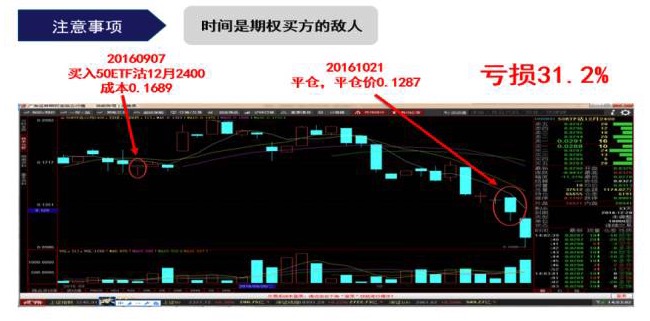
Hey me! Hey teacher, isn't that right? How did the stock market go, I bought a bear option and lost money?
Let's look at the graph just now, the blue line is the price of the option, the red line is the payment on the expiration date of the option, and the difference between the two, i.e. the blue line minus the red line, we call the time value of the option.
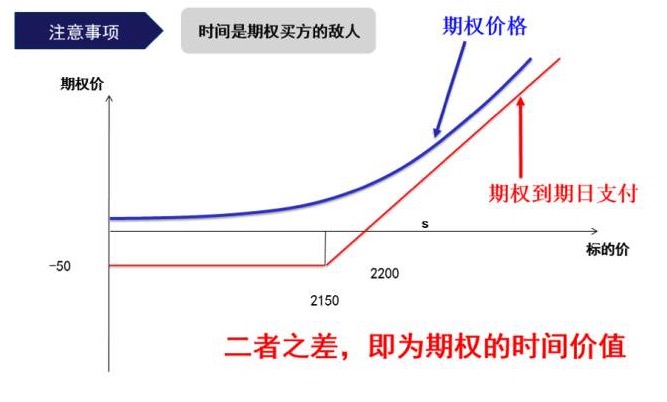
Let's see how the option operates during its lifetime. If you buy an option with a remaining term of three months (the blue line), then, after two months, the option goes to the green line. That is, the price of the option is always close to the expiration date when the time moves forward. This is where the option beginner must pay attention.
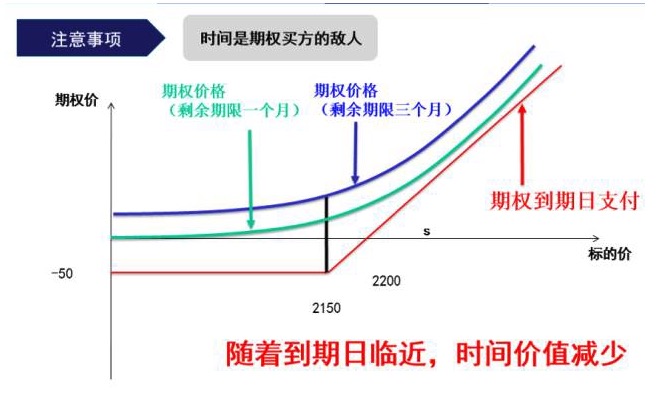
Translated from Quantification Lab
- The top 10 secrets that a good cook can't tell
- The price strategy of the Fiat 4
- Interesting quantitative short stories - multiple heads and blank heads
- Distribution options that simulate retesting use their own servers to prompt errors
- Changing the month of the main futures contract
- Aberration policy
- The 10 most basic utility algorithms that programmers should know and their explanations
- Trading philosophy in probability
- Where do you need to enter the funds password?
- GetRecords is not available on BTCTRADE.com
- Quantitative analysis of the stockpiling strategy
- Fun machine learning: the most concise introductory guide
- The law of the merchant
- Visual intuition 7 commonly used sorting algorithms (writing strategies commonly used)
- High-frequency trading strategy: Triangle leverage
- 20 Tips for Developing a Creative Mind
- Machine learning compares the 8 major algorithms
- Investing in winners: the secret to counter-intuitive thinking
- The basic requirements of a trading system
- The true amplitude of the ATR indicator used